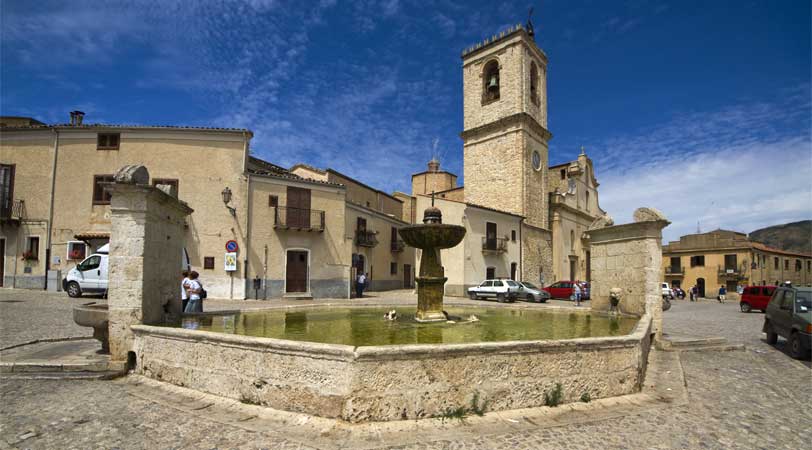
The village of Palazzo Adriano is famous for being the last municipality in the province of Palermo but also for having been the location of some important films, including Oscar winners.
Beyond this, however, it is a country that has a rich and varied history and which preserves traces of its past in the many monuments that can still be admired within its historic centre. There are many reasons for visiting this location: here is all the information you need to discover Palazzo Adriano.
The history of Palazzo Adriano
The original name of Palazzo Adriano seems to have been Arianum and traces of this feud can be found in the documents available from the Middle Ages. In reality, however, the real history of the village it begins in the XNUMXth century: on this date, in fact, a colony of refugees from Albania and Greece fled right into this area, probably driven by the advance of Turkish troops. Later, they settled in Palazzo Adriano, coexisting peacefully with the local population and giving life to that mix of origins that still characterizes the village today. Between the XNUMXth and XNUMXth centuries the village had such an important growth that it required not only the construction of a real castle (XNUMXth century) but also the building of numerous churches of different cults to satisfy the population.
What to see in Palazzo Adriano
All the historical vicissitudes of Palazzo Adriano are clearly visible in the small Old Town, which contains many traces of its past. Obviously, there is one of the monuments that deserve a visit the castle, which is located in the highest part of the village, on Colle San Nicola, and which is not in a state of perfect conservation due to neglect but also to the same historical events and natural disasters.
The castle was built around a small previous fortification, dating back to 1230, which has always given protection to the town, so much so that in the fifteenth century the town of Palazzo Adriano was established just outside the fortress. The main square of the village is that of Umberto I. Here you can admire not only the beautiful fountain that dates back to the seventeenth century but also numerous noble palaces that date back to the eighteenth century overlook this square, as demonstrated by the arcades with arches, typical of that period . Also noteworthy is the Church of Maria Santissima Assunta and the beautiful Monti di Palazzo Adriano and Valle del Sosio nature reserve, for a moment of relaxation in nature.
Things to do in Palazzo Adriano
Various religious and folk events are organized at Palazzo Adriano throughout the year. One of the most heartfelt appointments is that of feast of Saint Joseph, on March 19, when the traditional is organized bread table. On August 16, however, the Feast of Panairi, with the procession of saints and the following cattle fair. The feast of Saint Nicholas, however, is the one dedicated to the Patron saint, during which there is once again a procession of the statues of saints but also more folkloric aspects such as food and wine stands and fireworks. Finally, the sweet tooth cannot miss the doghouse festival, a typical dish of Albanian cuisine.
Palazzo Adriano, a village with an Oscar award!
As already underlined, the beauty of Palazzo Adriano is also evident from the fact that the village was chosen to be the location of numerous film sets. Certainly the most important event was the one related to filming of Nuovo Cinema Paradiso, the masterpiece of Giuseppe Tornatore who chose to shoot most of the external scenes in Palazzo Adriano, enchanted by its atmosphere. In honor of this event, since then the film also won the Academy Award, an architectural recovery project will soon be launched, with renovation works that will mainly concern Piazza Umberto I.
How to get to Palazzo Adriano
Those who want to reach Palazzo Adriano to discover the beauties of the village more closely can do so by car starting from Palermo and going along the SS118. Those who, on the other hand, move from Trapani will have to choose the SS188 while from Messina they will first take the A20 and then the E90. Those who leave from Catania can reach their destination by choosing the A19, from Syracuse first the A19 and then the E932, finally from Enna the reference road is the Ss189.
Palazzo Adriano does not have its own railway station, so those who prefer to move with the train they can do so by taking the nearby stations of Cammarata San Giovanni, Acquaviva or Roccapalumba-Alia as a reference: from here they can then continue with the local buses made available by the public company AST.
© Image by find, CC BY-SA 3.0, via Wikimedia Commons









